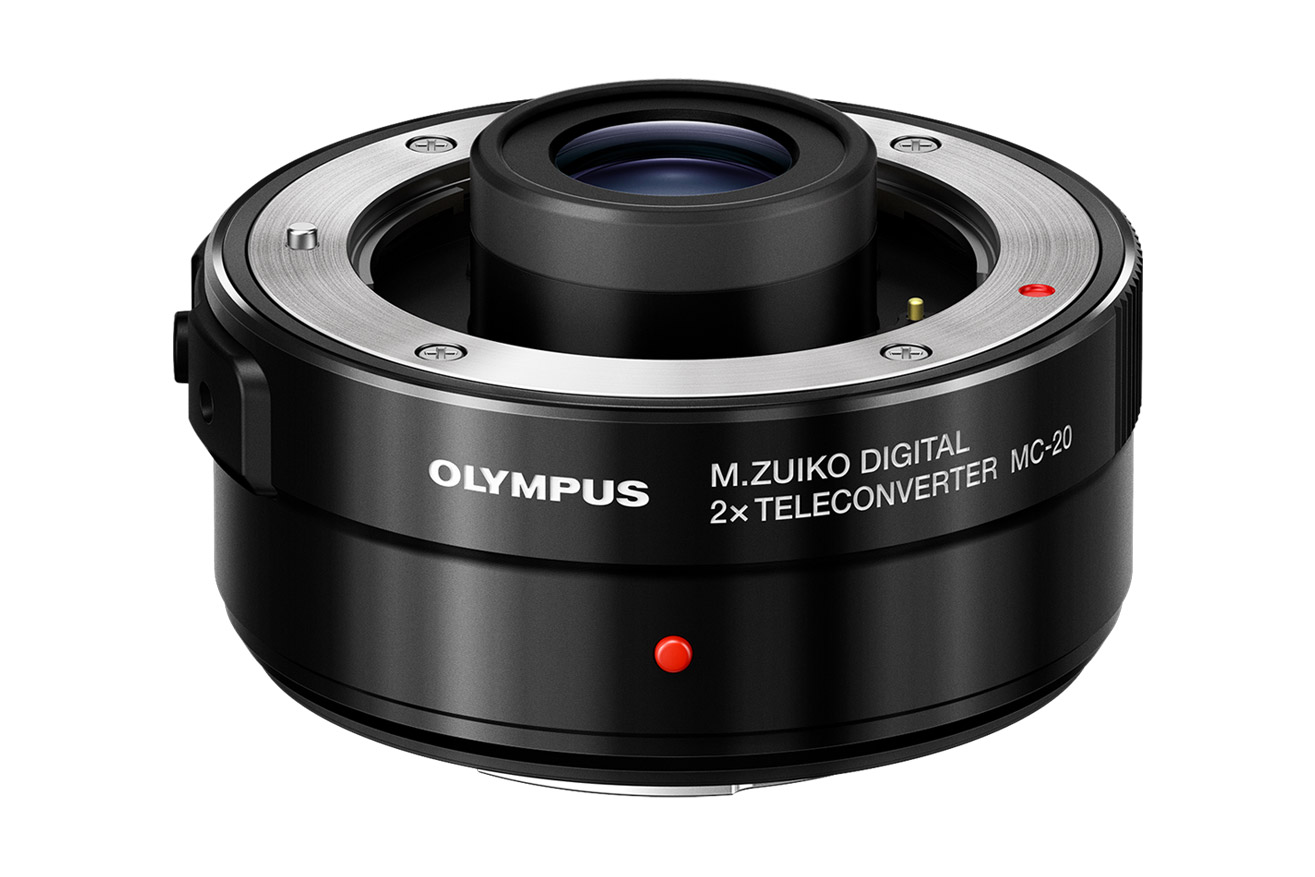With cameras like the OM-D E-M1X, Olympus continues to build a reputation among sports and wildlife photographers who want the capability of a large DSLR in a smaller overall package. To that end, the company is launching a new 2x teleconverter, the $430 MC-20, which will double the reach of its longest lenses while minimally increasing size and weight. Olympus also announced firmware updates to both the E-M1X and OM-D E-M1 Mark II, a camera that’s nearly three years old.
As competitors race to compete in the full-frame arena, Olympus is sticking to its decision to remain firmly planted in the Micro Four Thirds ecosystem. The smaller sensor size allows for equally smaller lenses that deliver the telephoto reach of full-frame optics twice as large. The MC-20 is compatible with two current telephoto lenses from Olympus, the 300mm f/4 IS Pro and 40-150mm f/2.8 Pro, and will also work with the upcoming 150-400mm f/4.5 lens that is still in development.
When used with the 300mm f/4, photographers will essentially have a 600mm f/8. But thanks to the inherent 2x crop factor of the Four Thirds sensor, the full-frame equivalent focal length is a staggering 1,200mm. That’s the type of reach that is difficult to come by in a full-frame lens, and even getting close to it would often be prohibitively expensive. Olympus also says that autofocus performance remains very good when using the MC-20 and that the in-body image stabilization, one of the company’s core competencies, only loses 1 stop of effectiveness.
OM-Log comes to the E-M1 Mark II
One of the most surprising features introduced on the E-M1X was OM-Log, Olympus’ take on a logarithmic tone curve for video. Compared to a standard linear curve, a log profile holds more dynamic range in compressed video, preserving detail in the shadows and highlights that would otherwise be lost. Short of shooting RAW video — something currently only possible on dedicated cinema cameras — it’s the best way to get film-like results from digital video. Olympus is now bringing OM-Log, along with many others features in the E-M1X, to the older E-M1 Mark II.
Log profiles have become increasingly popular in recent years, with everyone from video heavyweights Sony and Panasonic to traditionally stills-focused companies like Nikon offering them in their mirrorless cameras. While the 4K video mode introduced in the E-M1 Mark II was quite good, Olympus never really targeted videographers with that camera. With the addition of OM-Log, that could be changing.
Other features coming to the E-M1 Mark II include the updated autofocus algorithm found in the E-M1X that offers improved continuous performance and sensitivity down to minus-6 EV, the Low ISO Processing that improves detail at a slight expense to speed by running noise processing twice, and anti-flicker shooting for even exposures. One important improvement to the user experience has also been made: You can now review images or change settings even if the camera is still writing images to the card.
Both the E-M1X and E-M1 Mark II will also gain in-camera RAW processing over USB. Basically, you run the Olympus Workspace software on your computer, but the actual image processing is done inside the connected camera. Not only are the camera’s bespoke processors faster than the general purpose chip in your computer, but this method also uses Olympus’ color science rather than, say, Adobe’s or another third-party software manufacturer’s. Focus stacking and other compositing modes can also be accessed through Workspace.
The new firmware and latest version of Olympus Workspace are available as free downloads from Olympus.






